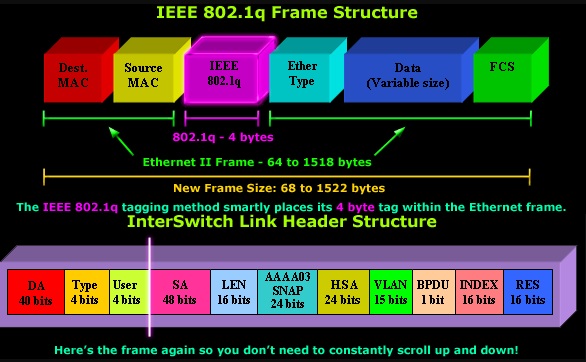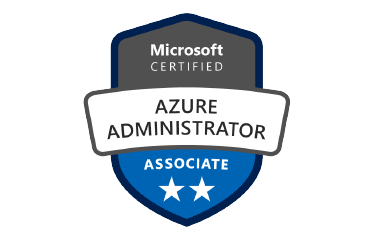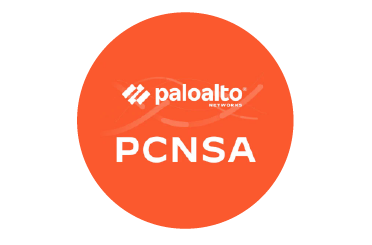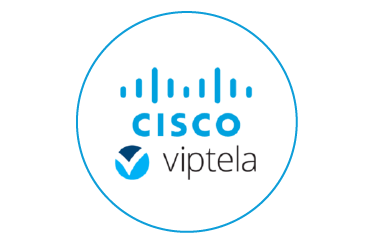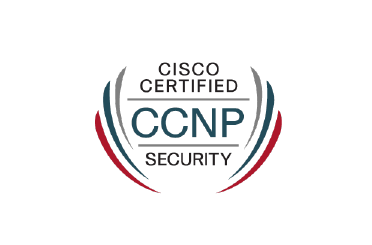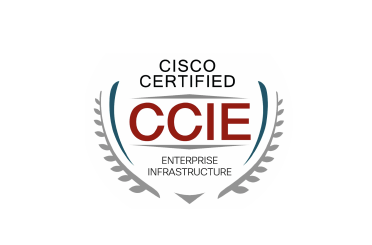There are two types of frames tagging protocols these are:
1) ISL (Inter-Switch Link)
The ISL functions at layer2 (datalink layer) by encapsulating a data frame with a new header and by performing a new Cyclic Redundancy Check. The original frame is encapsulated and an additional layer of header is added before the frame is carried over a trunk link. At the receiving point, the header is removed and the frame is forwarded to the assigned VLAN
The ISL encapsulation frame use (26 bytes) for header and (4 bytes) for trailer. So ISL protocol increases the size of a frame, up to 30 bytes and this protocol is a Cisco proprietary protocol and is not supported on new Cisco devices. ISL support 1000 VLAN on a trunk port.
2) Dot1q (or IEEE 802.1Q)
The industry-standard protocol is Dot1q. So, the advantage of this frame tagging protocol is we can configure trunk links in-between different vendor switches. Dot1q modifies the layer-2 header and adds only 4-byte VLAN tag into the frame. Dot1q supports 4096 VLANs on a trunk.
The normal frame size is in-between 64 to 1518 bytes. With ISL protocol, frame size increases 30 bytes and the frame becomes huge, but with dot1q the frame size is 1514 to 1518 bytes. And this value is supported by other vendors� switches.








